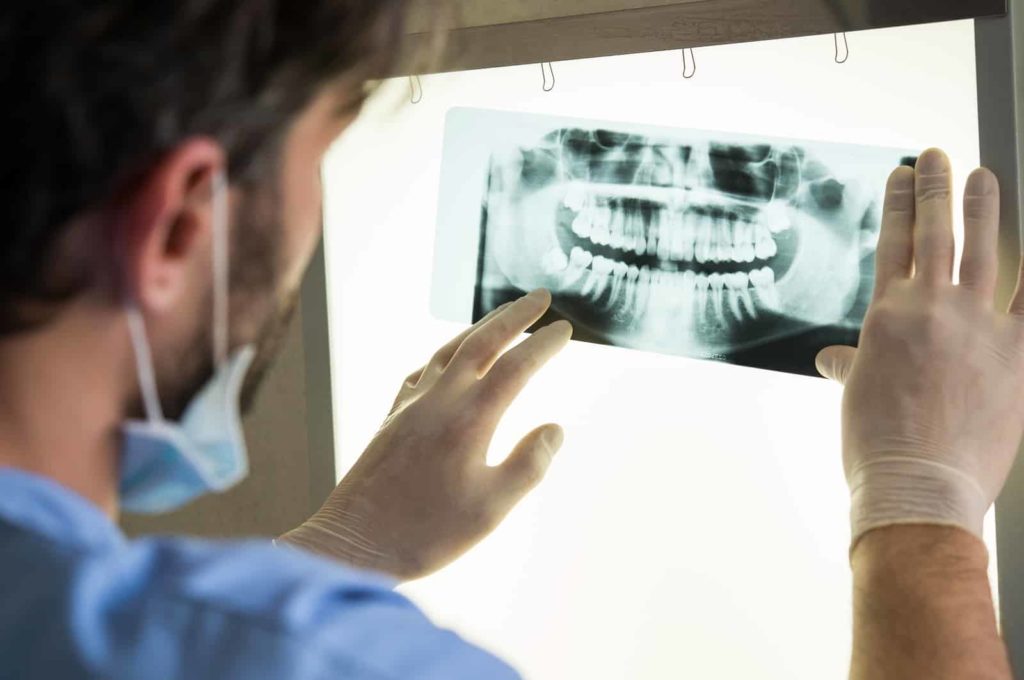
Why are Dental X-Rays Necessary
You’ve probably seen dental X-rays during your visits to the dentist throughout the years. But what are these X-rays for, and why do we need them? Dentists use dental X-rays (radiographs) to diagnose dental illness or damage that is not obvious during a clinical oral examination. These X-rays indicate treatment recommendations that your dentist may or may not make.
Discover more about dental X-rays, including how they operate and what they can discover.
How X-Rays Work
A small amount of electromagnetic energy is utilized during your dental X-ray to make an X-ray image of your teeth, roots, gums, jaw, and facial bones.
Dental radiographs, like other types of X-rays, work by sending a sort of radiation that is absorbed by solid things but passes through less dense tissues, such as your skin. Solid items absorb energy and appear brighter on the X-ray image (teeth and bones). This provides your dentist with an inside look at your oral health.
Frequency of Dental X-rays
The American Dental Association and the United States Food and Drug Administration (FDA) both recommend that the frequency of dental X-rays be determined on a case-by-case basis based on the risk of caries (tooth decay or cavity). Some people are more prone to tooth decay, influencing the regularity with which a dentist suggests dental X-rays. Your caries risk varies with time.
What They Detect
Dental X-rays can detect various irregularities in your oral health, including the early diagnosis of dental disorders that a visual, oral exam cannot see. Your dentist can propose specific treatments (for example, braces, implants, or wisdom teeth removal) based on your results.
Among the things your dentist will look for in your dental X-rays are:
- Bone fractures
- Bone loss in the jaw or facial bones
- Changes in the root canal
- Position, size, and number of teeth
- Impaction of teeth
- How the upper and lower teeth fit together
- Tooth decay, including between teeth or under fillings
- Abscesses and cysts
Dentists examine children and young adults for the existence (number and size) of teeth that are yet to develop. Adult teeth, wisdom teeth, and molars are all included. They also examine the spacing within the jaw to see how and if the adult teeth will fit when they emerge.
Types
Dentists check several elements of your oral health using various types of dental X-rays. Some are better suited to what your dentist is looking for than others.
The main types of dental X-rays include:
- Bitewing: You will bite down on a biting tab during the X-ray. The illustration depicts the top and bottom crowns of your teeth. These are usually administered every six to twelve months for children and every six to eighteen months for adults. However, the American Dental Association has suggested that they might be administered less frequently for some patients.
- Periapical: The image depicts the entire tooth, from crown to root. These are often used to let your dentist check specific problematic teeth and can show problems in the bone or root.
- Occlusal: This X-ray shows all the upper or lower teeth in a single image. They are used less frequently than other dental X-rays, but they can reveal abnormalities in a tooth arch, such as impactions or additional teeth.
- Panoramic: You will most likely stand or sit in a specially designed device that rotates around your head for this form of X-ray. The X-ray image includes your jaw, top set, and lower teeth. These are most commonly utilized in the planning of braces or surgery and are otherwise performed every three to five years.
- Cephalometric: This image depicts the profile view of the face and can be used to discover problems with the airway or how the upper and lower jaws fit together.
Summary
Dentists use many forms of dental radiography (X-rays) to detect mouth damage or disease that cannot be seen during an oral exam. Using these X-rays, they can make an early diagnosis and recommend the best treatment plan.
